Key takeaways:
- Feature creep results from the gradual addition of new features, complicating project scope and straying from original goals.
- Effective management of feature creep preserves user trust, satisfaction, and project timelines.
- Common causes include vague user feedback, excitement for new technologies, and lack of thorough planning.
- Utilizing tools like project management software and user story mapping can help maintain focus on essential features.
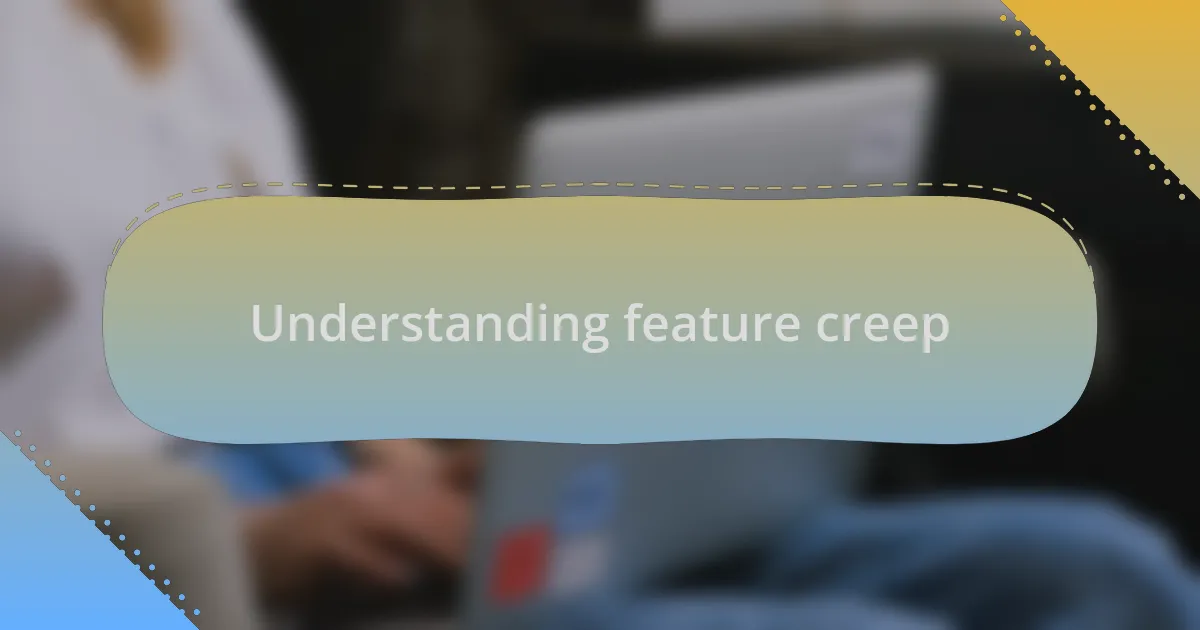
Understanding feature creep
Feature creep is the gradual addition of new features to a project, often leading to a more complex and unwieldy product. I remember a project where we aimed to launch a simple task management app, but as each team member suggested new features, like integration with every possible calendar or advanced analytics, the project scope ballooned. How easy is it to lose sight of the original goal when new ideas keep popping up?
The emotional weight of feature creep can be heavy, especially for developers. It’s frustrating to see a project slip away from its original vision due to numerous requests for “just one more feature.” Have you ever felt overwhelmed when your to-do list keeps growing rather than shrinking? I have, and it’s a sobering reminder that maintaining focus is crucial for timely project delivery.
One of the toughest lessons I’ve learned is that not every idea should make it into the final product. There was a time when I held on to the belief that adding features equated to higher satisfaction from users. Reflecting on that, I now see that simplicity often yields a better user experience and clearer functionality. It’s vital to prioritize features that align with the product’s core purpose and user needs.
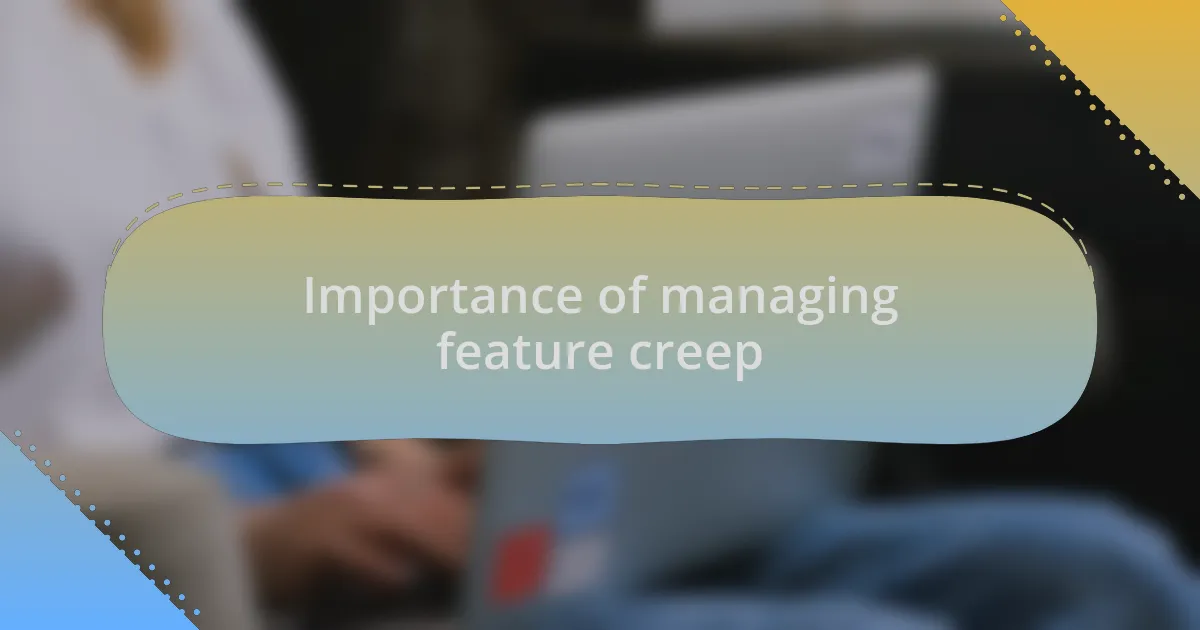
Importance of managing feature creep
Managing feature creep is crucial because it directly affects a project’s timeline and overall success. In my early days as a developer, I encountered a project that spiraled out of control simply because we added features that didn’t align with user demands. I learned firsthand that every new feature not only adds development time but also complicates testing and integration.
Another experience I had was when I worked on a startup application where the team insisted on continuously adding enhancements. It was exciting at first, but soon we found ourselves missing deadlines and frustrating users who just wanted a simple solution. This taught me that managing feature creep isn’t merely about keeping the project on schedule; it’s about preserving user trust and satisfaction.
I often reflect on how managing feature creep is like maintaining a garden; too many additions can turn it into an unruly mess. I’ve seen projects lose direction, exposing them to the risk of becoming bloated and confusing. Are we really serving our users by overcomplicating our products? The answer is a resounding no; a focused approach ultimately provides a cleaner and more enjoyable experience.
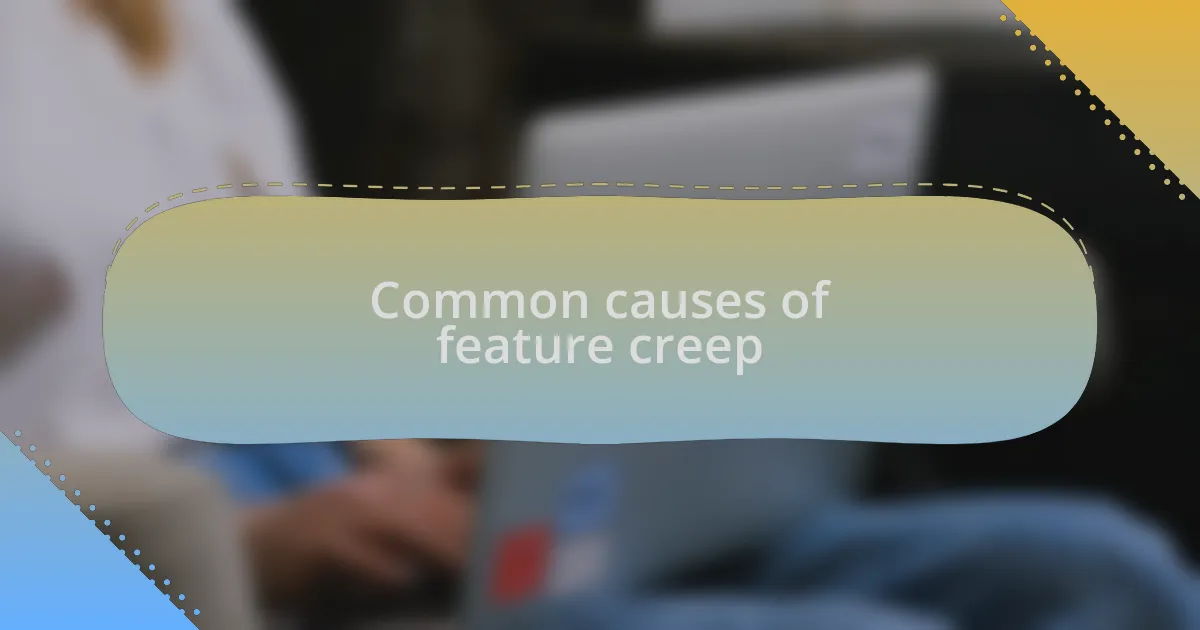
Common causes of feature creep
One common cause of feature creep is the tendency to address vague user feedback without clear prioritization. I remember working on a project where customers expressed a laundry list of wants, and instead of distilling that feedback into a coherent roadmap, we tried to check every box. It felt good to be responsive, but soon we were overwhelmed with complexity and lost sight of our primary goals. Can we really satisfy everyone without losing our way?
Another factor is the excitement that comes with new technologies or trends, leading teams to propose features that stray from the original vision. Early in my career, our team fell into this trap with a mobile app; we wanted to incorporate every cutting-edge tool, but instead of enhancing the user experience, we created a cluttered interface. It makes me wonder: does adding flashy features truly add value, or does it just distract from what users need most?
Lastly, a lack of thorough planning can open the floodgates for additional features. I’ve seen teams, including one I was part of, plunge into development without a solid foundation on project scope or goals. This often leads to a reactive approach where new ideas are piled on without evaluating their relevance. Are we setting ourselves up for success or just chasing an ever-expanding wish list?
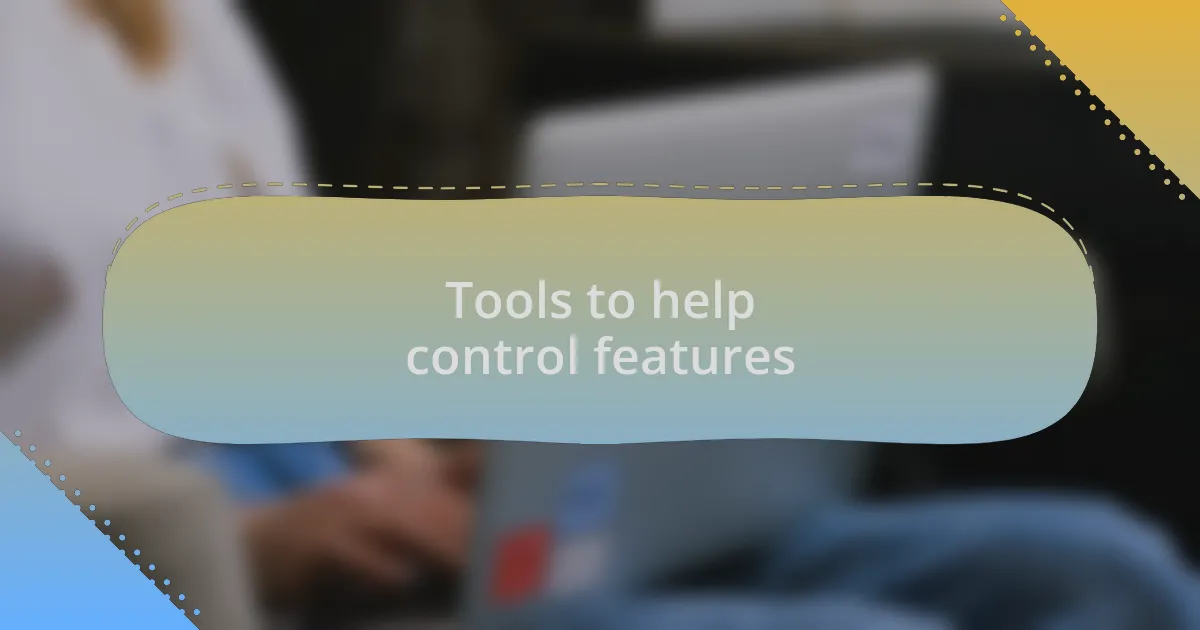
Tools to help control features
Tools designed to manage feature creep can be invaluable in maintaining project focus. In my experience, using a project management tool like Trello has been a game-changer. The ability to create boards for tasks and prioritize features is essential. I remember a project where we created a roadmap, and using Trello helped us visualize what was essential and what could be deferred, ensuring we wouldn’t lose sight of our main objectives.
Another powerful tool is user story mapping, which I found tremendously helpful when working on a complicated software solution. By breaking down features into user stories, the team could understand the actual needs of end users rather than chasing after the latest trend. It encouraged constructive discussions about what truly added value. Have you ever felt overwhelmed by a list of features? User story mapping can help you refocus on what is really necessary.
Lastly, keeping a changelog can assist in both documenting the journey and setting boundaries. I once led a project where we kept meticulous records of all feature requests and their statuses. This not only created transparency but also helped team members reflect on the reasons for declined features. It’s fascinating how looking back at those decisions reinforced our commitment to our core objectives. Have you thought about how documenting changes can guide future decisions?
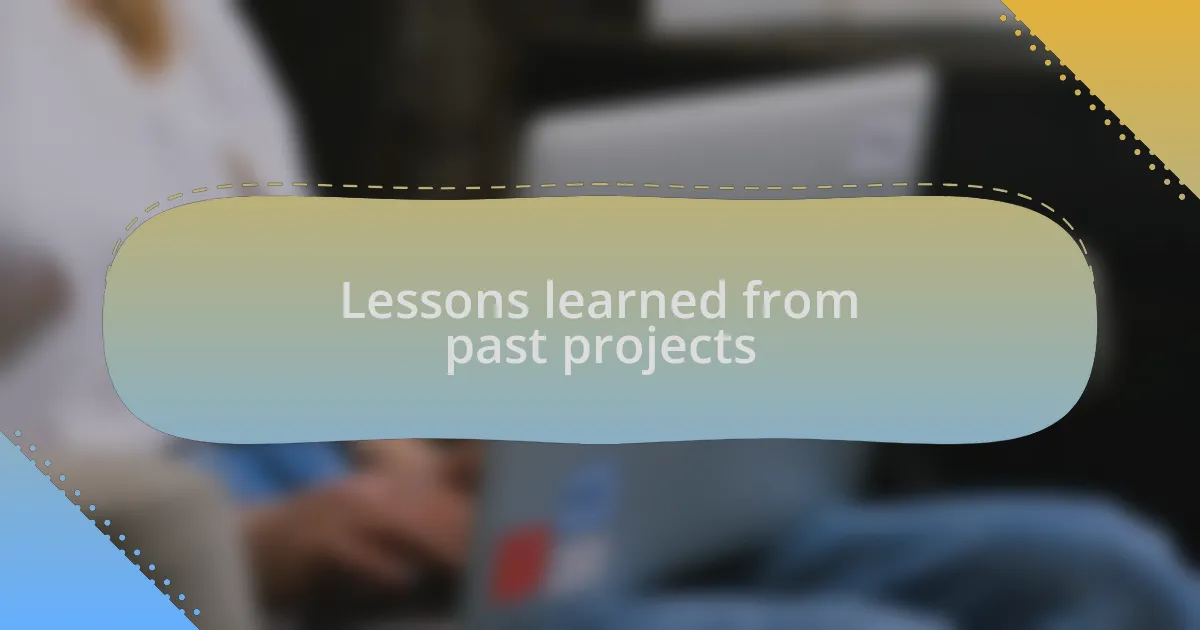
Lessons learned from past projects
One key lesson I’ve learned from past projects is the importance of setting clear priorities from the outset. I recall a project where we agreed to a long list of features based on initial excitement. However, as development progressed, our focus blurred, and team morale dipped. It taught me that defining what must stay front and center is crucial to avoiding unnecessary stress and wasted effort.
I also found that regular check-ins with the entire team can be a game-changer. During a particularly chaotic project phase, we instituted bi-weekly review meetings where we discussed feature relevancy. This not only helped us sift through ideas but also fostered a sense of collaboration and ownership. Have you ever experienced how a simple discussion can illuminate the path forward? For me, that realization led to more streamlined decision-making and ultimately a more cohesive end product.
Reflecting on a project with a delayed launch due to countless unexamined feature requests, I discovered how essential it is to say “no” decisively. Initially, I struggled with pushing back against stakeholders eager for every shiny idea, but I learned that those boundaries protect the project’s timeline and integrity. How do you establish those boundaries when the pressure to add new features is high? Developing that skill not only secures project goals but also enhances team stability and commitment.